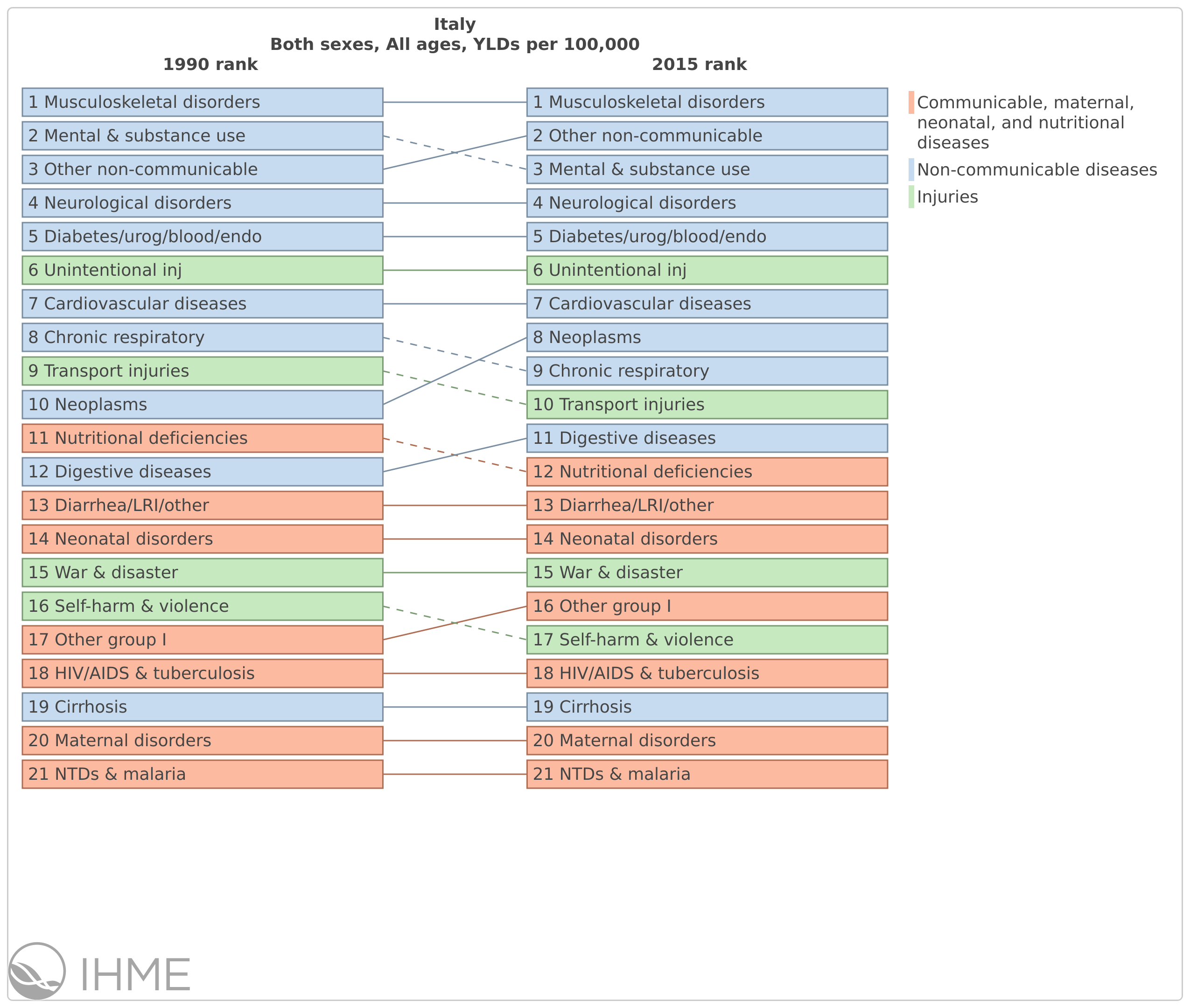Facing the dual challenge of aging societies and the rise of non-communicable diseases, health experts in countries like Italy are using burden of disease data to help guide policymaking.
Italy has brought in the new year with the launch of a new health policy document, the 12th Health Report: Health between institutional and social balances. Produced by the Consortium for Applied Economic Research in Healthcare (CREA Sanita), a not-for-profit organization founded by the Tor Vergata University of Rome and the Italian Federation of General Practitioners (FIMMG). This annual report provides critical research in support of the government’s decision-making around health care, and this year it draws on GBD to illustrate the growing importance of ill health in Italy.
The report, which CREA Sanita presented at an event at the Chamber of Deputies (within the Italian Parliament) on December 14, 2016, focuses on years lived with disability (YLDs) to assess how the health of Italians is changing. In Italy, life expectancy continues to rise but the number of YLDs – which measure the years of life people lose to diseases and injuries that are not fatal but which cause poor health – also increased between 1990 and 2015, showing the growing importance of conditions that cause suffering rather than death for the country’s overall burden of disease. This reflects an epidemiological shift toward chronic disease, driven largely by an aging population: Italians are leading longer, but sicker, lives.
Leading causes of disability in Italy, 1990 and 2015, both sexes, all ages

http://ihmeuw.org/3zs4
The report also highlights the burden of YLDs from diseases that affect non-elderly populations, too. Back and neck pain emerged as the leading cause of overall heath loss in 2013, with conditions such as depression and migraines ranking highly as well. It notes that conditions like this can be related to obesity, inactivity, and other behavioral risk factors and, particularly when present in younger people, can have serious economic impacts, both in terms of lost productivity and the increasing strain that will be put on the health system as they age. Drawing on these data the report recommends a determined effort toward tackling these risk factors, identifying “the need to intervene with more incisive prevention policies, with the aim of contributing toward gaining years of life in good health…in order to avoid negative consequences on well-being, individual productivity, and sustainable health care systems.”
While many of these trends may be attributable to increased life expectancy, changing disease patterns, and unhealthy behaviors, the report also suggests that declines in Italian health coincide with the recent economic crisis, which has impacted both public and private spending on health care. This insight builds on an earlier article by report author and GBD collaborator Cristiana Abbafati, which combines GBD’s epidemiological data with economic data on European health expenditure. She shows that Italy spends substantially less than other western European nations while also experiencing a faster growth of YLDs, building the case for increased investments for tackling disabling conditions.
The report suggests that Italy needs to improve the rate at which it addresses disability in order to keep up with its European counterparts like Greece, Finland, and Denmark, which are experiencing a more consistent decline in the burden of these conditions. Based on the GBD findings, health policy experts in Italy are now recommending a sharper focus on preventing chronic diseases, noting the importance of long, healthy lives for their population’s well-being and productivity, and the role this will play in improving the sustainability of their nation’s health system.